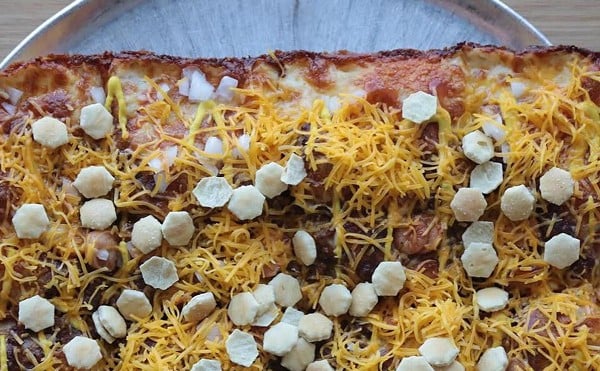Tom Waits, George Thorogood, Charles Bukowski, Mike Figgis, Ray Carver and even W.C. Fields have portrayed bourbon as the “binge drinker’s best friend.” But store shelves are now packed with small-batch, artisanal American whiskies — selling at prices that rival the best single malt scotches and finest cognacs.
With the holidays fast approaching, CityBeat convened a tasting panel to determine which bourbons belong on the wish lists of Cincinnati whiskey lovers. We met at the Deadwood Saloon (508 Madison Ave., Covington, 859-491- 3323), which has the area’s broadest and best selection. Owner Jeff Willis and bartender Tiffany Glasgow helped arrange the event, which included expert tasters Kate Basista and Chuck Warinner of Dilly Deli as well as regular Deadwood patron Tom Kindle.
All samples were served blind; that is, we didn’t know what was in our glasses when smelling, sipping and scoring. Even “barrel strength” bourbons (up to 120 proof) were served straight, though adding a bit of water will mellow these considerably for non-competitive drinking. Ratings were on a 10-point scale, and then averaged to determine a “winner.” Obviously, we couldn’t taste every bourbon on the market, but we did make it through 11 in about two-anda-half hours on a Sunday afternoon.
Now, since the dawn of civilization, people have made alcohol out of whatever they could find: honey, rice, grapes, potatoes, wheat, barley, sugar cane, etc. It’s said that whiskey has been produced since the sixth century, when monks first brought the distillation process to Ireland from the Middle East. Ireland and Scotland are still renowned for their whiskies made from sprouted barley and pure water.
When the Kentucky territory (then part of Virginia) was opened to settlers in 1785, many of the first settlers were Scottish and Irish immigrants. They brought with them a love of whiskey and a long tradition of distilling grains. Since corn grew better in Kentucky soil than barley, they adapted their traditional recipes and bourbon was born.
There are plenty of myths surrounding the development of America’s native spirit. For instance, it’s said that a Baptist preacher named Elijah Craig stored his clear corn whiskey in charred barrels for transportation down the Ohio River. At the time, much of Kentucky was made up of a single large county — Bourbon County — named to honor the French royal family for their assistance in the Revolutionary War. So Reverend Craig’s barrels might have been stamped “Old Bourbon” to indicate their point of origin. The name apparently stuck. Today, all bourbon is made from a minimum of 51 percent corn and must be aged in charred white oak barrels, but whether Elijah Craig really had anything to do with it is far from certain.
So, how’d the contenders stack up? Well, there was a clear winner: Elijah Craig 12-year-old, made by Parker Beam, Jim Beam’s grandnephew, at Heaven Hill Distillery in Bardstown, Ky. At 94 proof with a maple-syrup amber color, it gives off gorgeous aromas of fruit (oranges, peaches) and candy (butterscotch, chocolate, licorice). On the palate, it’s rich, smooth and lush. Honeyed fruit flavors and herby, spicy rye character balance the alcohol so it never comes across as hot. At only about $21/bottle retail, this is phenomenal bourbon that should be on your short list for holiday gifting.
Rounding out the top three were Bookers (at 120 proof, the highest alcohol bourbon we tasted) and Woodford Reserve (90.4 proof). Now, distilling is a family business, handed down across the generations, and each barrel of Bookers is hand-selected by Booker Noe, Jim Beam’s grandson, then bottled uncut, unblended and unfiltered. Our sample was an orangey rust color with a big deep nose of fruit and spice — plums and vanilla, caramel, toffee and mint. It had tons of flavor and alcohol on the palate, which released its gorgeous rye character with the addition of a little water. On my sheet, I wrote, “This is the shit!” and Chuck wrote, “Great raw power.” Kate said, “Big time caramel-y and maple-y,” while Tom noted it was clearly “one for before dinner, with ice.”
I do want to note here that there wasn’t as much correlation between price and quality as I had expected. Jim Beam White Label ($16) finished solidly in the middle of the pack, while Knob Creek ($30) and Black Maple Hill 8-year-old ($35) finished toward the bottom. There were also some fairly broad differences of opinion. For instance, Chuck and Kate both ranked the Jefferson Reserve Very Old, Very Rare ($52) at the top of their score cards, while it just didn’t speak to Tom and me in the same way.
So I’d urge you stop by the Deadwood for your own personal bourbon sampling and see what speaks to you. Just tell Jeff and Tiffany that CityBeat sent you!
Click HERE for the full scoop on the samples.
CONTACT MICHAEL SCHIAPARELLI: [email protected]





